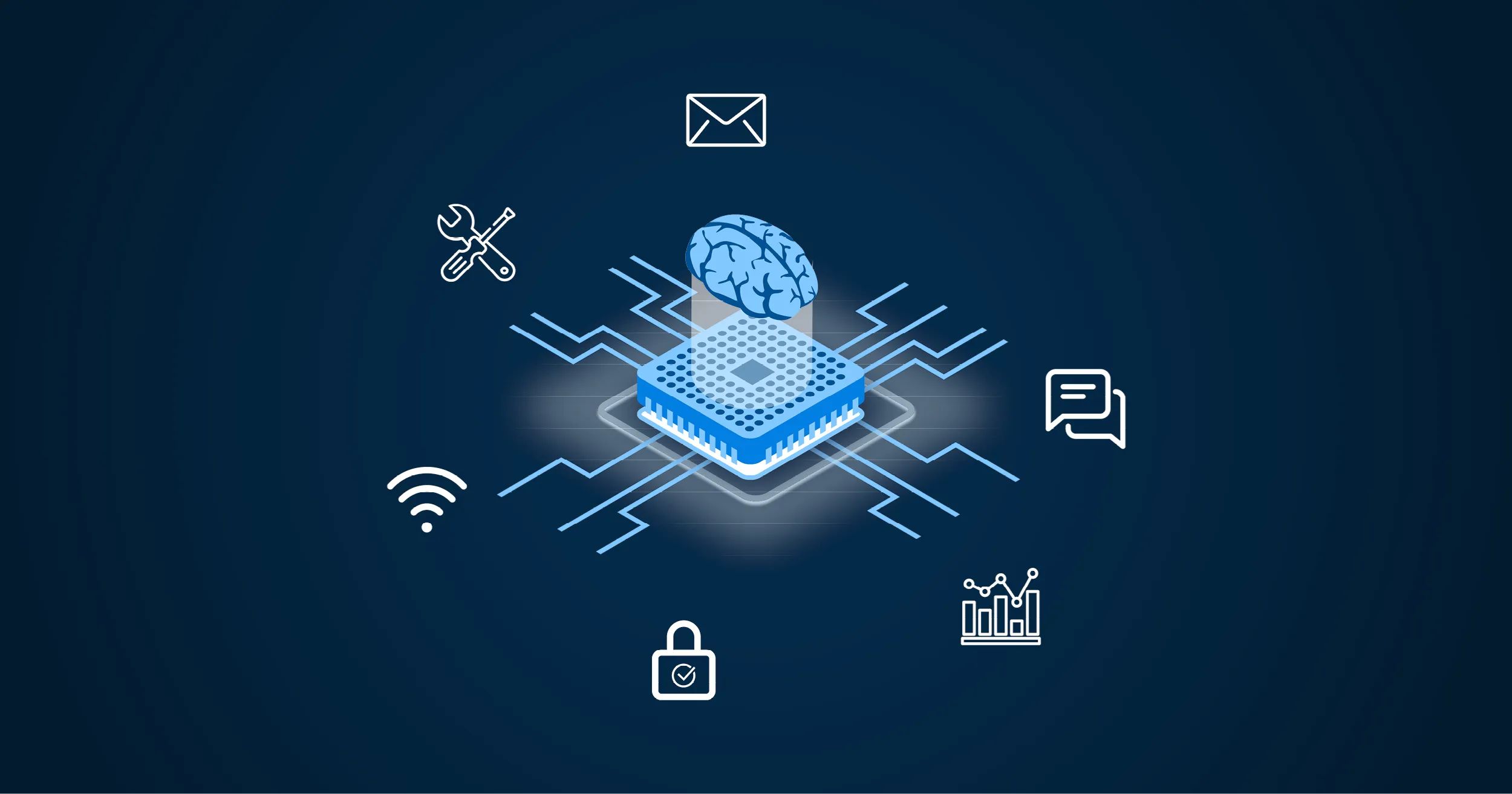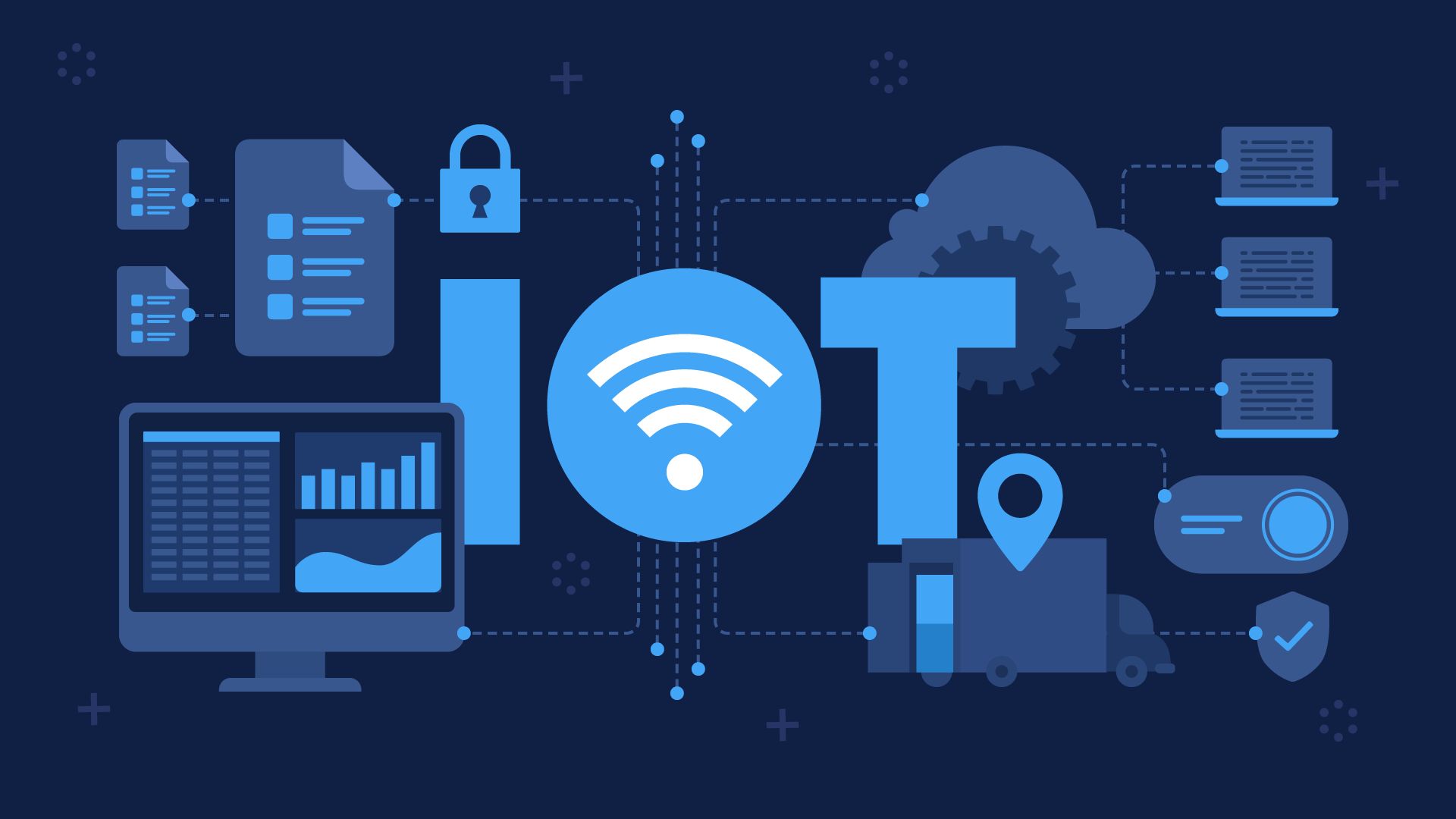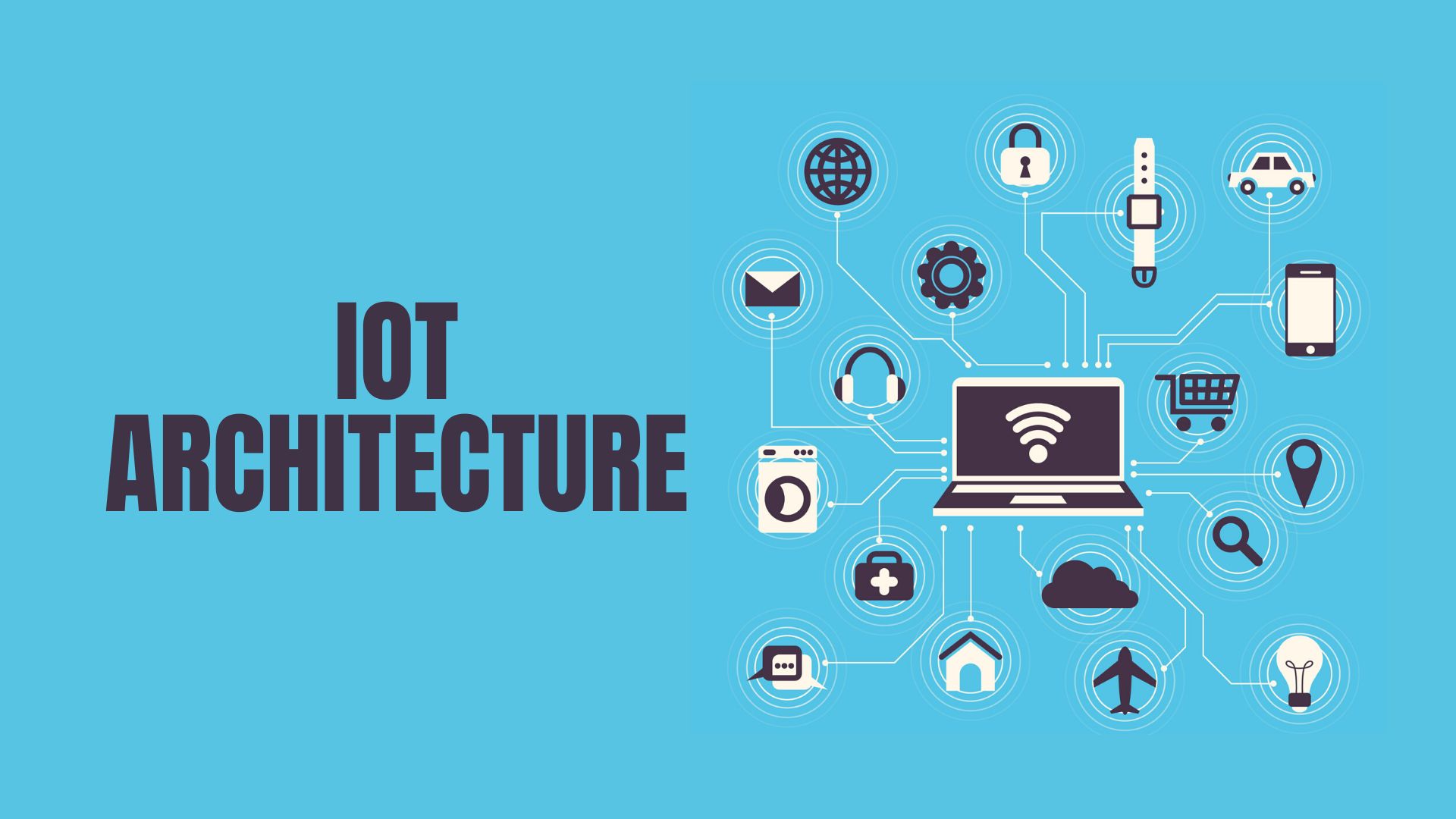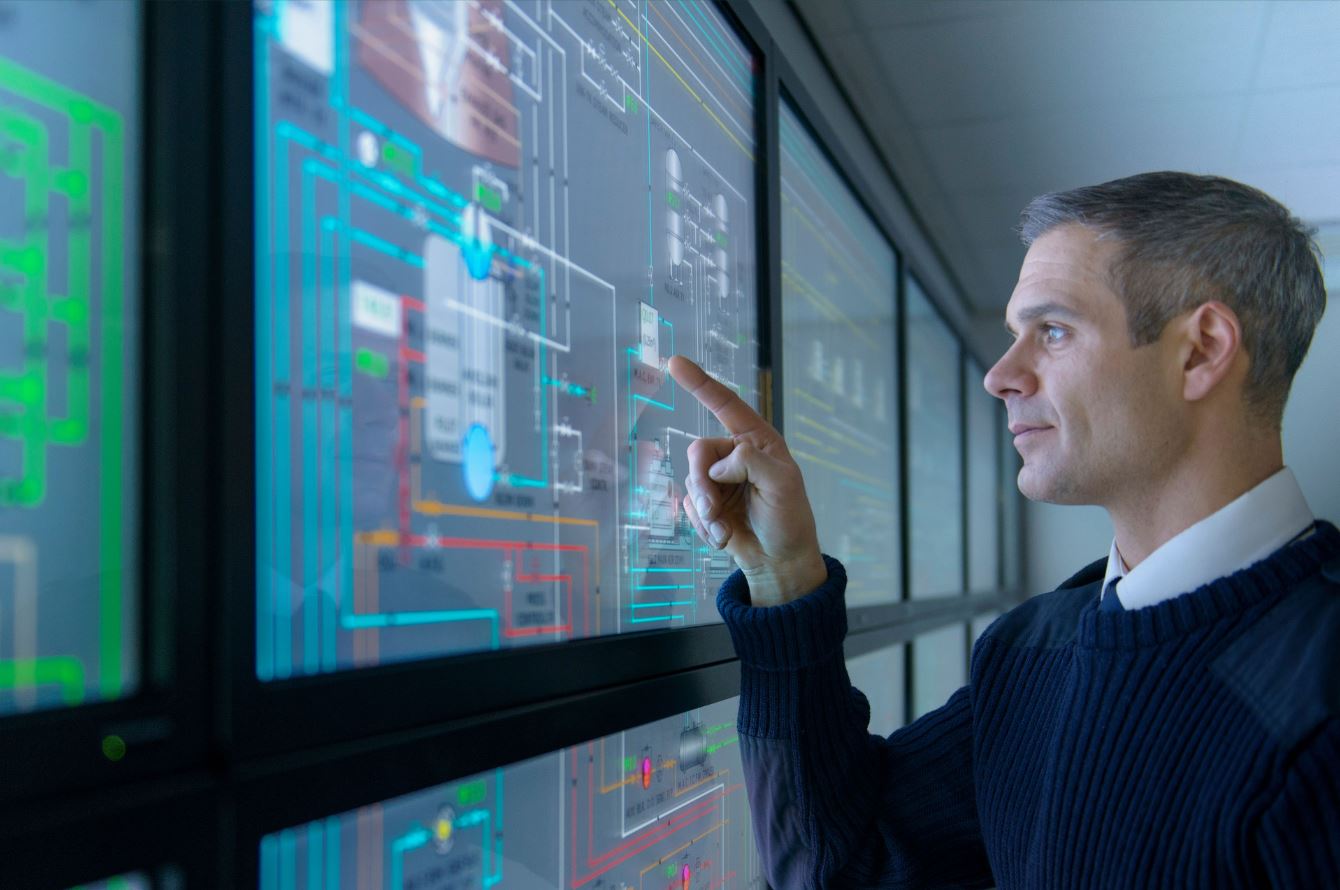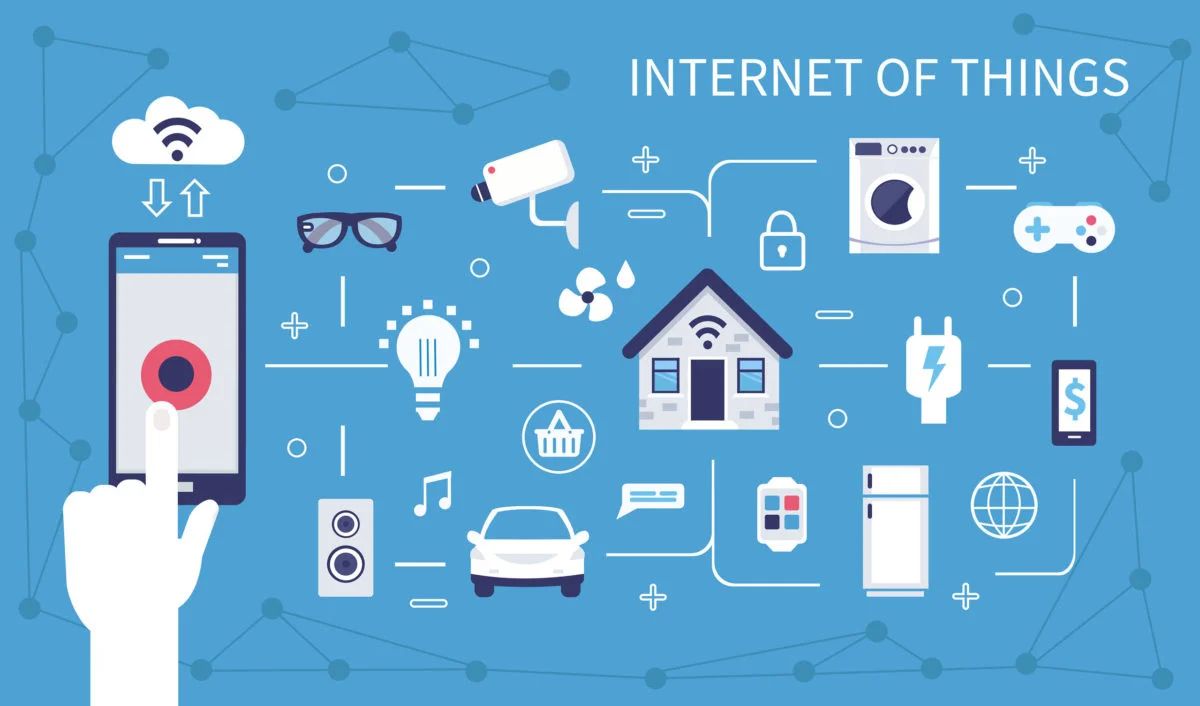Introduction
Welcome to the world of IoT (Internet of Things), where devices and objects are interconnected, creating a network of smart systems that revolutionize our daily lives. One crucial component of IoT is actuators, which play a vital role in enabling devices to perform various actions and interact with the physical world.
An actuator is a device that converts an electrical signal into mechanical motion. It allows IoT devices to move, manipulate, control, or respond to their environment. Imagine a smart home where lights automatically turn on when you enter a room, or a self-driving car that can adjust its speed and direction based on surrounding conditions. These actions are made possible by actuators.
The key function of actuators in IoT is to bridge the gap between the digital and physical worlds. While sensors gather data from the environment and send it to a central system, actuators receive instructions from that system and translate them into physical actions.
This article aims to provide you with an understanding of actuators in IoT – what they are, the types of actuators used, their applications, benefits, challenges, and future trends.
So, let’s dive into the fascinating world of actuators and explore how they are shaping the Internet of Things!
What are Actuators?
Actuators are devices that convert electrical signals into mechanical motion or physical actions. In the context of IoT, actuators play a crucial role in enabling devices to interact with the physical world and perform various tasks. They act as the interface between the digital and physical realms, allowing IoT devices to move, manipulate, control, or respond to their environment.
Actuators work by receiving instructions or signals from a central system or controller. These signals can be in the form of electrical voltages, currents, or digital commands. The actuator then converts the received signals into mechanical motion, making it possible for devices to perform specific actions.
There are various types of actuators used in IoT, each with its own mechanism and application. Common types of actuators include electric actuators, hydraulic actuators, pneumatic actuators, piezoelectric actuators, and electroactive polymers (EAP) actuators.
Electric actuators are widely used in IoT applications due to their versatility and ease of control. They utilize electrical energy to generate rotational or linear motion. Electric motors, solenoids, and stepper motors are examples of electric actuators.
Hydraulic actuators use liquid or fluid power to generate mechanical movement. They are often used in applications that require high force or heavy loads. Hydraulic cylinders and hydraulic motors are common examples of hydraulic actuators.
Pneumatic actuators, on the other hand, use compressed air or gas to create mechanical motion. They are widely used in applications such as robotics, automation, and industrial processes. Pneumatic cylinders and pneumatic motors are examples of pneumatic actuators.
Piezoelectric actuators utilize the piezoelectric effect, where certain materials generate electric charges when mechanical stress is applied to them. These actuators are highly precise and can generate small displacements or vibrations. They are commonly used in nanotechnology, precision positioning systems, and medical devices.
Electroactive polymers (EAP) actuators are a relatively newer type of actuator that can change shape or size when exposed to electrical stimuli. They offer advantages such as lightweight, flexibility, and low power consumption. EAP actuators are used in applications such as artificial muscles, haptic feedback devices, and soft robotics.
In summary, actuators are essential components in IoT systems, enabling devices to interact with the physical world and perform various actions. They convert electrical signals into mechanical motion, allowing IoT devices to move, manipulate, control, or respond to their environment. The specific type of actuator used depends on the application requirements, such as force, precision, power consumption, and compatibility with other system components.
Types of Actuators in IoT
In the vast field of IoT, there are several types of actuators used to enable devices to interact with the physical world and perform various tasks. Each type of actuator has its own mechanism and application, catering to different needs and requirements. Let’s explore some of the common types of actuators used in IoT:
1. Electric Actuators: Electric actuators are widely used in IoT applications due to their versatility and ease of control. They convert electrical signals into mechanical motion and can generate rotational or linear movement. Examples of electric actuators include electric motors, solenoids, and stepper motors. Electric actuators find applications in smart homes, robotics, HVAC systems, and industrial automation.
2. Hydraulic Actuators: Hydraulic actuators use liquid or fluid power to generate mechanical movement. They are commonly employed in applications that require high force or heavy loads. Hydraulic cylinders and hydraulic motors are examples of hydraulic actuators. These actuators find use in industrial machinery, construction equipment, and automotive systems.
3. Pneumatic Actuators: Pneumatic actuators utilize compressed air or gas to create mechanical motion. They are widely employed in IoT applications such as robotics, automation, and industrial processes. Pneumatic cylinders and pneumatic motors are examples of pneumatic actuators. These actuators are valued for their fast response time, simplicity, and cost-effectiveness.
4. Piezoelectric Actuators: Piezoelectric actuators utilize the piezoelectric effect, where certain materials generate electric charges when mechanical stress is applied to them. These actuators are highly precise and can generate small displacements or vibrations. They are commonly used in nanotechnology, precision positioning systems, microscopy, audio devices, and medical instruments.
5. Electroactive Polymers (EAP) Actuators: Electroactive polymers (EAP) actuators are a newer type of actuator that can change shape or size when exposed to electrical stimuli. They offer advantages such as lightweight, flexibility, and low power consumption. EAP actuators find applications in artificial muscles, haptic feedback devices, soft robotics, and wearable technology.
These types of actuators provide a range of options for IoT system designers and developers. The choice of actuator depends on factors such as the required force, precision, power consumption, response time, and compatibility with other system components. It’s essential to select the appropriate actuator that suits the specific needs and constraints of the IoT application.
Electric Actuators
Electric actuators are widely used in IoT applications due to their versatility and ease of control. These actuators convert electrical signals into mechanical motion, allowing devices to perform various tasks. They are capable of generating both rotational and linear movement, making them suitable for a wide range of applications.
One of the key advantages of electric actuators is their precise control. By adjusting the input electrical signals, the speed, direction, and position of the actuator can be controlled with great accuracy. This level of control is essential in applications where precise positioning or intricate movements are required.
There are several types of electric actuators commonly used in IoT:
- Electric Motors: Electric motors are the most common type of electric actuators. They are available in various types, such as AC motors, DC motors, and stepper motors. Electric motors use the principles of electromagnetism to generate rotational motion. They are extensively used in IoT applications like smart homes, robotic systems, automated machinery, and automotive systems.
- Solenoids: Solenoids are electric actuators that convert electrical energy into linear motion. They consist of a coil of wire wrapped around a magnetic core. When an electrical current passes through the coil, a magnetic field is generated, causing a plunger or rod to move. Solenoids find applications in areas such as door locks, valves, actuators in automotive systems, and home appliances.
- Stepper Motors: Stepper motors are a type of electric motor that divides a full rotation into equal steps. They offer precise control over position and speed by energizing the motor windings in a particular sequence. Stepper motors are commonly used in robotics, 3D printers, CNC machines, and precise positioning systems.
Electric actuators provide several benefits in IoT applications. They offer precise control, high reliability, and low maintenance requirements. They can be easily integrated with control systems and are capable of handling a wide range of loads, from small devices to heavy machinery.
However, electric actuators also have some limitations. They typically require a continuous power source, which may not be feasible in applications where power consumption is a concern. Electric actuators can also produce heat and noise, and their size may limit their suitability in compact systems.
Nevertheless, electric actuators are widely adopted in IoT due to their versatility, precise control, and ease of integration. As technology advances, we can expect further improvements in electric actuators, including enhanced efficiency, reduced size, and improved performance, opening up new possibilities for their implementation in IoT applications.
Hydraulic Actuators
Hydraulic actuators are an essential type of actuator used in IoT applications that require high force or heavy load capabilities. These actuators utilize liquid or fluid power to generate mechanical motion, allowing devices to perform tasks that require significant force or precise control.
The main components of a hydraulic actuator are a hydraulic cylinder and a hydraulic motor. The hydraulic cylinder consists of a piston or plunger that moves linearly within a cylindrical chamber filled with hydraulic fluid. When pressure is applied to the fluid, it causes the piston to move, resulting in linear motion. Hydraulic motors, on the other hand, utilize hydraulic pressure to generate rotational motion.
One of the key advantages of hydraulic actuators is their ability to generate high force. By using hydraulic fluid, these actuators can exert powerful forces even in compact designs. This makes them highly suitable for applications such as heavy machinery, construction equipment, and industrial automation.
Another advantage of hydraulic actuators is their precise control. The flow of hydraulic fluid can be regulated to control the speed, direction, and force of the actuator. This level of control allows for smooth and precise movements, making hydraulic actuators ideal for applications that require precise positioning or delicate control.
Hydraulic actuators offer several benefits for IoT applications:
- High Force Capacity: Hydraulic actuators can generate substantial force, making them suitable for heavy-load applications. They excel in applications where powerful and controlled movement is required, such as in construction machinery and industrial processes.
- Smooth and Precise Control: The flow of hydraulic fluid can be precisely controlled, enabling smooth and precise movements. This level of control is essential in applications that require accurate positioning or intricate motion control.
- Compact Design: Hydraulic actuators can deliver high force in a compact design. This makes them valuable in applications where space is limited, such as in automotive systems or small-scale automation.
However, hydraulic actuators also have certain limitations. They require a hydraulic power source, which means an additional system for generating and controlling hydraulic pressure. This can add complexity and increase costs in some applications. Hydraulic fluid leakage and maintenance requirements are another consideration that needs to be addressed.
Despite their limitations, hydraulic actuators are widely used in IoT applications that demand high force capabilities. As technology advances, we can expect further improvements in hydraulic actuator efficiency, compactness, and reliability, making them even more versatile and suitable for various IoT applications.
Pneumatic Actuators
Pneumatic actuators are an important type of actuator used in IoT applications that require fast and responsive movement. These actuators use compressed air or gas as a power source to generate mechanical motion, allowing devices to perform tasks such as pushing, pulling, gripping, or rotating.
The main components of a pneumatic actuator are a pneumatic cylinder and a control valve. The pneumatic cylinder consists of a piston that moves linearly within a cylindrical chamber. When compressed air or gas is released into one side of the cylinder, it pushes the piston, resulting in linear motion. The control valve controls the flow of compressed air, determining the direction and speed of the actuator.
Pneumatic actuators offer several advantages for IoT applications:
- Fast Response Time: Pneumatic actuators can respond quickly to changes in air pressure, allowing for fast and precise movements. This is advantageous in applications where rapid motion or immediate response is required, such as in robotics, automation, and assembly line processes.
- Cost-Effectiveness: Pneumatic systems are typically more affordable compared to other actuation methods. The components used in pneumatic actuators, such as cylinders and valves, are cost-effective and readily available. This makes pneumatic actuators a popular choice for various IoT applications.
- Simplicity and Ease of Control: Pneumatic systems are relatively simple and easy to control. By adjusting the air pressure and flow rate, the speed and force of the actuator can be controlled. The simplicity of pneumatic actuators makes them user-friendly and versatile in IoT applications.
Pneumatic actuators do have some limitations. They require a source of compressed air or gas, which means an additional system for generating and storing the air supply. The air compressors and storage tanks may add complexity and increase the overall system size. Pneumatic actuators may also produce noise and require regular maintenance to ensure optimal performance.
Despite their limitations, pneumatic actuators are widely used in IoT applications due to their speed, cost-effectiveness, and simplicity. As technology continues to advance, we can expect further improvements in pneumatic actuator efficiency, noise reduction, and integration with IoT systems, expanding their applications across various industries.
Piezoelectric Actuators
Piezoelectric actuators are a unique type of actuator used in IoT applications that require precise and fine-scale movements. These actuators operate based on the piezoelectric effect, where certain materials generate an electric charge when subjected to mechanical stress. The generated electric charge causes the material to deform, resulting in mechanical motion.
The key advantage of piezoelectric actuators is their ability to provide extremely precise and accurate movements on a small scale. They are capable of generating small displacements or vibrations with high resolution, making them suitable for applications that require micron-level positioning or nanotechnology.
Piezoelectric actuators offer several benefits for IoT applications:
- Precision and Control: Piezoelectric actuators offer micro-level precision and control. By applying an electric current to the actuator, precise and repeatable movements can be achieved. This makes them particularly useful in applications such as microscopy, precision positioning systems, and micro-robotics.
- Compact Size: Piezoelectric actuators are compact and lightweight, making them ideal for applications where space is limited or weight is a concern. Their small size allows for integration into miniature devices and systems, fostering advancements in portable IoT technology.
- Low Power Consumption: Piezoelectric actuators generally consume low amounts of power, making them energy-efficient and suitable for battery-powered IoT devices. They have a high energy conversion efficiency, allowing for prolonged operation without frequent battery changes or recharging.
However, piezoelectric actuators also have limitations. They typically have a limited range of motion and cannot generate high force compared to other types of actuators. Additionally, temperature variations can affect their performance, requiring careful thermal management in certain applications.
Despite their limitations, piezoelectric actuators are widely used in IoT applications that demand precision and miniaturization. As technology progresses, advancements in piezoelectric materials and designs are expected, leading to improved performance and expanded applications for piezoelectric actuators in the IoT domain.
Electroactive Polymers (EAP) Actuators
Electroactive polymers (EAP) actuators are a relatively newer type of actuator used in IoT applications that require flexibility, lightweight design, and low power consumption. These actuators are made of polymers that exhibit changes in shape or size when subjected to electrical stimulation.
The key advantage of EAP actuators is their unique ability to produce large deformations or motion while being lightweight and flexible. They offer advantages over traditional actuators in terms of energy efficiency, adaptability, and improved safety in certain applications.
There are several types of EAP actuators with different operating principles:
- Electrostatic Actuators: Electrostatic EAP actuators are based on the principle of attractive or repulsive forces between charged surfaces. They can generate large deformations with low power consumption, making them suitable for applications such as artificial muscles, haptic feedback devices, and micro robotics.
- Dielectric Elastomer Actuators (DEA): DEA actuators are made of an elastomeric material sandwiched between two layers of compliant electrodes. When an electric field is applied, the elastomer deforms, allowing for large actuation strains. DEA actuators find applications in soft robotics, adaptive optics, and sensory feedback devices.
- Ionic Polymer-Metal Composites (IPMC): IPMC actuators are composed of a polymer material with metal ions that can move in response to an electrical stimulus. This movement causes the actuator to bend or deform. IPMC actuators are used in biomimetic devices, robotic grippers, and underwater applications.
EAP actuators offer several benefits in IoT applications:
- Flexibility and Lightweight Design: EAP actuators are inherently flexible and can be fabricated into various shapes and forms. Their lightweight design allows for integration into wearable devices, conformable systems, and applications where weight reduction is critical.
- Low Power Consumption: EAP actuators typically operate at low voltages and require low power to generate motion. This makes them energy-efficient and suitable for IoT devices that run on limited power sources or require long battery life.
- Safety and Softness: EAP actuators are soft and compliant, resulting in improved safety and reduced risk of injury in interacting with humans. Their unique properties enable safe human-machine interactions, such as in medical devices or assistive technologies.
However, EAP actuators still face challenges, including limited available materials, complex fabrication processes, and lower force generation compared to traditional actuators. Ongoing research and development efforts aim to address these challenges and unlock further potential for EAP actuators in the IoT landscape.
Applications of Actuators in IoT
Actuators are integral components of IoT systems, enabling devices to interact with the physical world and perform various tasks. They find applications across a wide range of industries and domains, revolutionizing processes, enhancing automation, and improving user experiences. Let’s explore some of the notable applications of actuators in IoT:
1. Smart Homes: Actuators play a key role in creating smart homes by controlling and automating various functions. They enable the automated opening and closing of doors, windows, and curtains. Actuators are also used in smart lighting systems to adjust brightness and color based on preferences or environmental conditions. They facilitate the control of HVAC systems, adjusting temperature, airflow, and ventilation based on occupancy or remote commands.
2. Industrial Automation: Actuators are extensively used in industrial automation to control and manipulate machinery and processes. They enable precise movement in robotic arms for assembly line operations, material handling, and welding applications. Actuators are also used to control valves, pumps, and motors in industrial processes, enhancing efficiency and productivity.
3. Automotive Industry: Actuators are found in various subsystems of automobiles, improving safety, comfort, and performance. They control the movements of power windows, adjustable seats, and sunroofs. Actuators are also used in power steering systems, throttle control, and brake systems, enhancing vehicle control and driving experience.
4. Healthcare and Medical Devices: Actuators play a crucial role in medical devices and healthcare applications. They enable precise movement and control in surgical robots, assisting surgeons in performing minimally invasive procedures. Actuators are used in prosthetics and exoskeletons, providing mobility and enhancing the quality of life for individuals with physical disabilities. They are also utilized in drug delivery systems, insulin pumps, and patient monitoring equipment.
5. Aerospace and Aviation: Actuators are vital in the aerospace and aviation industry, providing control and maneuverability in aircraft systems. They are used in flight control surfaces such as ailerons, elevators, and rudders, ensuring precise and responsive movements. Actuators are also employed in landing gear systems, cabin pressure control, and engine control systems, ensuring smooth and safe operations.
6. Energy Management: Actuators are used in IoT applications for energy management and conservation. They control the opening and closing of valves in smart grid systems, enabling efficient distribution and monitoring of electricity. Actuators are also employed in solar panel tracking systems, optimizing the position of solar panels to maximize energy capture.
These are just a few examples of the applications where actuators in IoT play a crucial role. Actuators continue to find new applications and revolutionize industries, enhancing automation, improving efficiency, and enabling new possibilities in the IoT landscape.
Benefits of Actuators in IoT
The integration of actuators in IoT systems brings numerous benefits, enhancing the functionality and capabilities of devices and enabling interaction with the physical world. Actuators play a pivotal role in automating processes, improving efficiency, and providing better user experiences. Below are some of the key benefits of actuators in IoT:
1. Automation and Control: Actuators enable automation and control in IoT devices, reducing the need for manual intervention and improving efficiency. They can perform complex movements, adjust settings, and respond to environmental changes based on predefined rules or user commands. This automation streamlines operations, reduces human error, and frees up time for more important tasks.
2. Enhanced Functionality: Actuators expand the functionality and capabilities of IoT devices. They enable devices to move, manipulate, and interact with the physical world, allowing for a wide range of operations. Actuators open doors, adjust lighting, control temperature, move robotic arms, and perform countless other actions, making IoT devices more versatile and adaptable to various scenarios.
3. Real-Time Responsiveness: Actuators enable real-time responsiveness in IoT devices, allowing them to react promptly to changes in the environment or user inputs. With actuators, devices can adjust their behavior, position, or settings in real-time, ensuring optimal performance and user satisfaction. This real-time responsiveness enhances safety, efficiency, and overall user experience.
4. Precision and Accuracy: Actuators offer precise control over movements, enabling devices to perform tasks with high accuracy and precision. They can achieve fine-scale movements, adjust positions with micro-level precision, and perform repetitive actions consistently. This precision is valuable in applications that require accurate positioning, such as robotics, medical devices, and industrial automation.
5. Improved Safety: Actuators contribute to improved safety in IoT applications. They enable devices to perform tasks that would be dangerous or risky for humans. For example, actuators can handle hazardous materials, work in extreme environments, or perform operations that require high force or precision. By taking on these tasks, actuators reduce the risk of human harm and minimize potential accidents.
6. Energy Efficiency: Actuators can be designed to operate with low power consumption, enhancing energy efficiency in IoT systems. They can perform actions with minimal energy usage and adapt their operational states based on energy-saving algorithms. Energy-efficient actuators contribute to longer battery life, reduced power consumption, and overall sustainability in IoT applications.
These benefits highlight the significant role that actuators play in IoT systems. By enabling automation, enhancing functionality, and providing precise control, actuators enhance the performance, efficiency, and user experience of IoT devices, contributing to the evolution and advancement of the Internet of Things.
Challenges of Actuators in IoT
While actuators play a crucial role in IoT applications, they also face certain challenges that need to be addressed for optimal performance and successful implementation. These challenges arise from various factors, including technological limitations, system integration complexities, and operational considerations. Let’s explore some of the key challenges of actuators in IoT:
1. Power Consumption: Actuators require a power source to generate mechanical motion, and their power consumption can sometimes be a challenge in IoT applications. Since many IoT devices operate on limited power sources such as batteries or energy harvesting, it’s important to design actuators that are energy-efficient and optimize power consumption to extend the device’s operating life.
2. Size and Weight: IoT devices often have size and weight constraints, especially when integrated into wearable technology, robotics, or other compact systems. Actuators need to be designed to be small and lightweight while still delivering the required force and functionality. Finding the balance between performance and size can be a challenge in many IoT applications.
3. Integration and Compatibility: Actuators need to integrate seamlessly with other IoT components and systems to ensure smooth operation and control. They must be compatible with the communication protocols and interfaces used in the IoT ecosystem. Ensuring interoperability and smooth integration can be complex, especially when dealing with a wide range of devices and platforms.
4. Precision and Accuracy: Achieving precise and accurate movements is crucial in many IoT applications that require fine-scale positioning or delicate operations. Actuators need to deliver consistent and repeatable performance, free from jitter, backlash, or other sources of errors. Maintaining precision and accuracy in dynamic and varying conditions can be challenging.
5. Reliability and Durability: Actuators in IoT applications often operate in challenging environments, including extreme temperatures, vibrations, or humidity. They need to be designed to withstand these conditions and maintain reliable performance over time. Ensuring the durability and longevity of actuators is essential for IoT devices that are expected to operate for extended periods without failures or malfunctions.
6. Cost: The cost of actuators can be a significant consideration, especially when deploying IoT devices on a large scale. Balancing the performance and functionality of actuators with cost-effectiveness is essential for widespread adoption of IoT technology. The cost challenge becomes more significant when considering factors such as materials, manufacturing processes, and integration complexities.
These challenges highlight some of the considerations that need to be addressed when integrating and utilizing actuators in IoT applications. Overcoming these challenges will contribute to the development of efficient, reliable, and high-performing actuators that can meet the diverse needs of IoT systems.
Future Trends of Actuators in IoT
The field of actuators in IoT is constantly evolving, driven by advancements in technology and the increasing demand for smarter and more efficient devices. Several future trends are shaping the development and utilization of actuators in IoT applications. Let’s explore some of these trends:
1. Miniaturization: As IoT devices become more compact and integrated into various objects and wearables, there is a growing need for miniaturized actuators. Future trends will focus on developing smaller, yet powerful actuators that can deliver precise movements while consuming less space and power. These miniaturized actuators will drive advancements in areas such as smart wearables, medical implants, and consumer electronics.
2. Energy Efficiency: IoT devices are often constrained by limited power sources, leading to the need for energy-efficient actuators. Future trends will focus on the development of actuators that optimize power consumption, utilize energy harvesting techniques, and employ advanced control algorithms to maximize energy efficiency. This will enable longer device battery life and reduced reliance on external power sources.
3. Flexibility and Stretchability: Flexible and stretchable actuators are gaining importance in IoT applications, especially in fields like robotics and medical devices. Innovations in materials and fabrication techniques are paving the way for actuators that can conform to irregular shapes, bend, or stretch without compromising performance. These flexible actuators will enable the development of soft robotic systems and wearable devices that can adapt to various scenarios.
4. Integration with Artificial Intelligence (AI) and Machine Learning (ML): Actuators will increasingly be integrated with AI and ML capabilities to enhance automation, adaptability, and smart decision-making. By combining actuators with intelligent algorithms, devices can learn from user behavior or environmental factors and autonomously adjust their actions. This integration will enable predictive maintenance, adaptive control, and personalized user experiences in IoT applications.
5. Sensory Feedback: Actuators with sensory feedback capabilities will become more prevalent in IoT systems. By incorporating sensors into actuators, devices can have a better understanding of their environment, detect changes, and respond accordingly. This will lead to more interactive and immersive experiences in areas such as virtual reality, gaming, and haptic interfaces.
6. Intelligent Power Management: Actuators will incorporate intelligent power management techniques to optimize energy usage. Future trends include the development of actuators that can adapt their power requirements based on contextual information, such as user interactions or environmental conditions. This will maximize energy efficiency while ensuring the actuators are responsive and ready to perform when needed.
7. Enhanced Connectivity: Actuators in IoT devices will leverage advanced connectivity technologies, such as 5G and edge computing, to enable real-time control and remote operation. This improved connectivity will enhance the responsiveness and flexibility of actuators, allowing for efficient coordination and synchronization between multiple devices in IoT systems.
These future trends in actuators reflect the direction in which IoT technology is heading. With advancements in materials science, manufacturing processes, and smart algorithms, actuators will continue to evolve, enabling IoT devices to become smarter, more efficient, and seamlessly integrated into our daily lives.
Conclusion
Actuators play a crucial role in the world of IoT, enabling devices to interact with the physical world and perform various actions. They bridge the gap between the digital and physical realms, converting electrical signals into mechanical motion and empowering IoT devices to move, manipulate, control, or respond to their environment.
In this article, we explored the different types of actuators used in IoT, including electric actuators, hydraulic actuators, pneumatic actuators, piezoelectric actuators, and electroactive polymers (EAP) actuators. Each type has its own mechanism, advantages, and applications, catering to a wide range of IoT requirements.
Actuators find applications in various domains of IoT, including smart homes, industrial automation, automotive systems, healthcare, aerospace, and energy management. They bring automation, precision, and expanded functionality to these applications, enhancing efficiency, safety, and user experiences.
Despite the numerous benefits, actuators also face challenges in the realm of IoT. These challenges include power consumption, size and weight constraints, integration complexities, precision and accuracy requirements, reliability, and cost considerations. Overcoming these challenges is crucial for the continued advancement and widespread adoption of actuators in IoT applications.
Looking towards the future, actuators in IoT will continue to evolve and improve. Miniaturization, energy efficiency, flexibility, integration with AI and ML, sensory feedback, intelligent power management, and enhanced connectivity are some of the key trends that will shape the development of actuators in the IoT landscape.
In conclusion, actuators are fundamental components in IoT systems, enabling the dynamic interaction between digital intelligence and the physical world. With their diverse capabilities and applications, actuators are propelling IoT technology forward, making our lives more connected, efficient, and automated.










